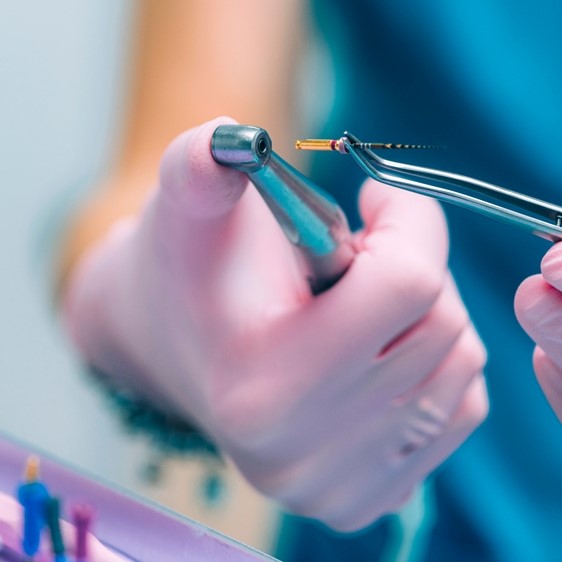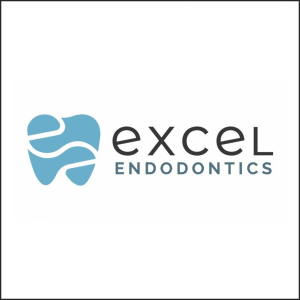
Adhesive dentistry and endodontics: materials, clinical strategies and procedures for restoration of access cavities: a review
The complexity of restorative dentistry has increased greatly in recent years, with the myriad of products used in “adhesive dentistry.” So too has the “simple” matter of restoring access cavities after completion of endodontic treatment. This review discusses current methods of “bonding” to tooth structure, ceramic materials, and metals, with emphasis on those aspects that are important to endodontics. Specific materials, procedures and major decision making elements are discussed, as well as how to avoid problems in compatibility between endodontic and restorative materials.
Section snippets
Contamination of the Root Canal System
One of the primary goals of root canal treatment is to eliminate bacteria from the root canal system to the greatest possible extent (2, 3). Bacteria have been shown to be the etiology for apical periodontitis (4) and to be the cause of endodontic failure (2, 3, 5). One of the goals in restoring of the tooth after root canal treatment should be to prevent recontamination of the root canal system.
Temporization
To minimize the likelihood of contamination, immediate restoration is recommended upon completion of root canal treatment (19, 20, 21).
When immediate restoration is not possible, and the tooth must be temporized, a thick layer of temporary material should be used, preferably filling the whole chamber. The majority of restorative dentists prefer a cotton pellet in the chamber, however (22).
Restoring Access Openings
When an access opening is made through an existing restoration, several things should be considered. Removal of all existing restorations is desirable if possible, because it allows more complete assessment for the presence of cracks and caries (47). This is particularly recommended for old class 1 and class 2 restorations, because they are likely to be removed later anyway, in the process of preparing the tooth for a crown.
Bonding to Enamel
Enamel is often present along the margins of access preparations of anterior teeth. The resin bond to etched enamel is strong and durable. The technique dates back to 1955 (58). Etching of enamel with an acid such as 30 to 40% phosphoric acid results in selective dissolution of the enamel prisms and creates a surface with a high surface energy that allows effective wetting by a low viscosity resin.
Bonding to Metal-Ceramic and All-Ceramic Restorations
Access cavities are often made through metal-ceramic or all-ceramic materials, so attaining an effective, durable bond is important when restoring them. The literature is unambiguous that the best method to bond to porcelain is to first roughen the surface by acid etching and then apply a silane coupling agent, followed by the resin (67, 68, 69, 70).
Bonding to Dentin: Resin Materials
Bonding to dentin with resin materials is more complex than bonding to enamel or porcelain. Dentin consists of approximately 50% inorganic mineral (hydroxyapatite) by volume, 30% organic components (primarily type 1 collagen) and 20% fluid (100). The wet environment and relative lack of a mineralized surface made it a challenge to develop materials that bond to dentin.
Bonding to Dentin: Traditional Glass Ionomer Cements
Glass ionomer cements are made primarily of alumina, silica and polyalkenoic acid and are self curing materials. Most glass ionomer cements release fluoride for a period of time after initial placement. They are the only restorative materials that depend primarily on a chemical bond to tooth structure (131). They form an ionic bond to the hydroxyapatite at the dentin surface (132) and also obtain mechanical retention from microporosities in the hydroxyapatite (133).
Bonding to Dentin: Resin Modified Glass Ionomer Materials
Resin modified glass ionomer (RMGI) materials were developed to overcome some of the undesirable properties of the traditional glass ionomer cements. RMGI materials contain glass ionomer cement to which a light-cure resin is added. The purpose of the resin is to allow immediate light polymerization after the material is placed. The resin also protects the glass ionomer cement from dehydration, and improves the physical and mechanical characteristics and optical properties.
Endodontic Issues in Dentin Bonding
Some of the materials used in endodontics may have a significant impact on the bonding process. These issues apply not only to restoration of access cavities, but also to the obturating materials that utilize adhesive resin technology, which will be discussed in a subsequent article.
Silver Amalgam Alloy
Not surprisingly, silver amalgam alloy is the most common choice for restoring access cavities in metal crowns (161). The clinical technique is simple, with few steps, and provides a durable restoration. “Bonded amalgam” is often recommended (57) in which a resin adhesive is placed on the cavity walls before condensation of the amalgam alloy. The adhesive provides an immediate seal.
Material Incompatibilities
The “self etching” adhesive systems have generally been shown to result in low bond strengths when used with self-cure composites and dual-cure composites that have not been light activated (126, 175, 176, 177, 178). This is in part because of residual acid on the dentin surface. Self-cure composites contain tertiary amines in the catalyst that initiate the polymerization reaction and have a high pH.
Clinical Strategies
Most strategies for restoring access cavities require several steps and at least two layers of restorative material. Many approaches utilize an adhesive system and two restorative materials.
Authors: Richard S. Schwartz, Ron Fransman
Source: https://www.sciencedirect.com/
 Tag
Tag
 Related articles
Related articles
News 03 October 2025
Excel Endodontics, a new specialty dental practice founded by endodontist Dr. Rachel Halpern, is proud to announce its official opening in Marlboro, New Jersey, along with the launch of its new...
Endodontics 01 October 2025
Obliteration of the root canal system due to accelerated dentinogenesis and dystrophic calcification can challenge the achievement of root canal treatment goals.
Products 17 September 2025
Modern Micro Endodontics is pleased to announce the opening of its newest location at 356 Broadway in Bayonne, New Jersey. This expansion strengthens the practice’s.
A new dual-cured resin sealer has recently been proposed as an innovative endodontic filling material.
News 04 September 2025
Forest Lake Endodontics in Forest Lake, Minnesota, announced today that endodontist Dr. Linda Liu has joined its team, bringing advanced training in root canal treatment and a strong commitment to...
 Read more
Read more
Implantology 21 November 2025
In 2004, a survey of the deans of U.S. and Canadian dental schools was conducted to determine the implant dentistry curriculum structure and the extent of incorporating implant dentistry clinical...
Editorials 21 November 2025
Products 21 November 2025
Curve Dental, the leading provider of all-in-one, cloud-based dental practice management software, recently announced a new strategic integration partnership with DentalHQ, a premier patient...
News 21 November 2025
GreenMark Biomedical Inc., a company developing innovative solutions for oral health, earlier this year was awarded funding via the Translational Resource Center (TRC) regenerative medicine program,...
News 21 November 2025
In honor of Veterans Day, Dental365 hosted its annual Free Day of Dentistry for Veterans on November 9, 2025, offering complimentary dental care to veterans across multiple locations in four...















